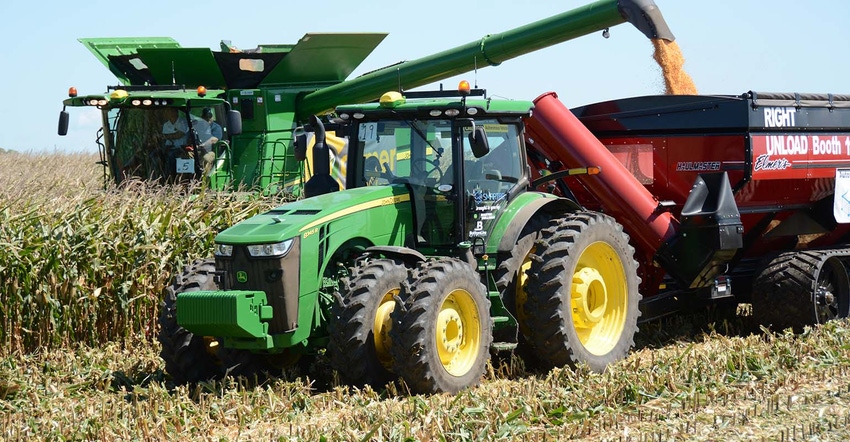September 2, 2019

Coming from one major farm show, a few media events and some in-depth conversations with engineers has opened my eyes to something many readers may not have considered. People are excited about robots and automation. Driverless equipment gets plenty of attention – and for good reason. But have you ever considered the robot tractor and combine you already own?
Think about it a moment. Auto-steering technologies have advanced well beyond being limited to straight lines. During a media event at the new headquarters for the John Deere Intelligent Solutions Group in Johnston, Iowa, John Stone, senior vice president, shared the story of a farmer who planted more than 200 acres and never touched the steering wheel once he started.
Sure, there’s some glamour to a driverless machine pulling alongside a combine to help unload grain, and that gets attention at shows. But when you consider all the technology wrapped up in today’s equipment, we’re a long way down the road toward more automation.
Harvest tools
For many, harvest is in full swing, or about to start. If you’re climbing into a recent-vintage combine you have more tools at work inside that machine than ever before. In conversations with Claas, John Deere, Case IH and New Holland you learn that these machines – once set – do a lot of the on-the-go adjustment faster than you can.
These systems can make adjustments based on information gathered from crop coming into the threshing system, but also what’s going out to make sure that grain goes where it belongs – in the tank versus behind the combine.
Companies have tested these systems by putting veteran operators in the driver’s seat and challenged them to harvest their way first, then used these automation systems second. In case after case, the veteran operator finds that the system does as good or better at maintaining the combine adjustment for the crop than a person can do manually.
I won’t name names but heard at the Farm Progress Show that one combine marketing manager – a veteran operator himself – was even skeptical of these systems on first use for his company’s machine. And he was converted after running his company’s newest model.
ISOBUS and control
New Holland carved a new trail two years ago when it implemented full ISOBUS 3 control in its top-level balers and some tractor models. The tractor and baler “talk” to each other and the baler can speed up or slow down the tractor to maintain optimum material flow for the best bale. The driver just follows the windrow and let the baler control the tractor’s speed.
But consider how the ISOBUS connection between implement and tractor is changing operation too. From baler control to precision tillage. And that control is just a start to eventually automating the process.
Great Plains launched ISOBUS control of the TurboMax with Implement Command. It’s not automated but does allow the user to control gang angles and depth on-the-go without ever leaving the cab. It’s those kind of early steps that can eventually lead to other automated controls.
I’m not saying that companies are working on it – yet the mating of implement and tractor combined with sensors and artificial intelligence holds out that potential.
I think automated equipment is coming, though I have a lot of questions about implementation, logistics and even legal issues. For now, I’m amazed at what I’m seeing in the equipment you’re driving now.
About the Author(s)
You May Also Like






